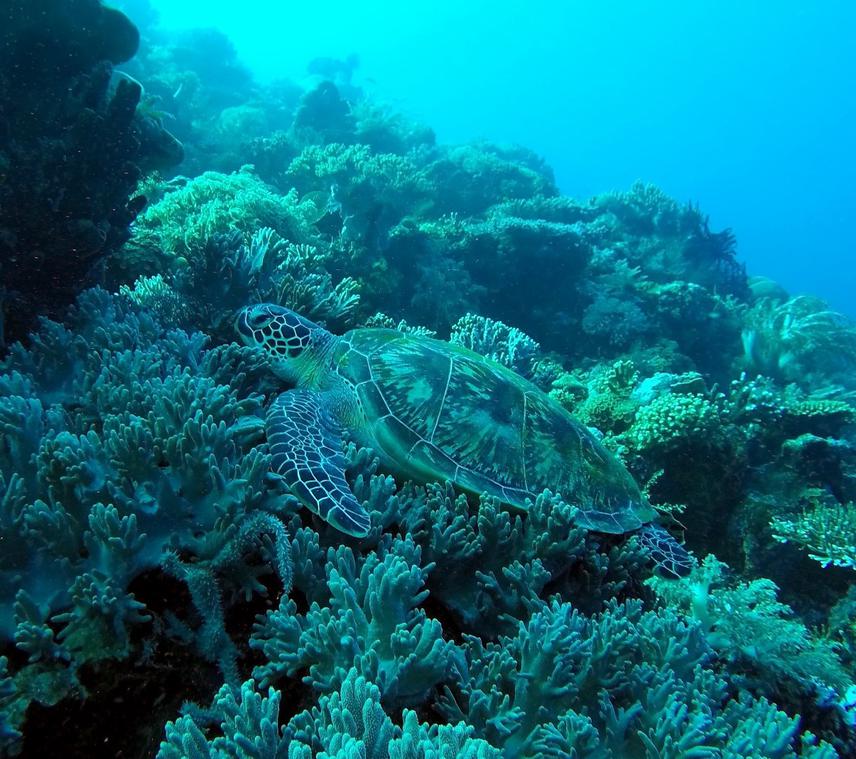Nupur Kale
a) To monitor green turtle population size and distribution for better management
b) To identify changes in turtle diet using faecal analysis
c) To devise methods to reduce fisher-turtle conflict using information on local turtle distribution
d) To facilitate sea grass recovery and conservation through experimental set-ups

The green sea turtle is classified as ‘Endangered’ by the International Union for Conservation of Nature (2017). Although green turtle populations, especially those in the Atlantic and Pacific Oceans, have been extensively studied, this species has been neglected in South Asia. Apart from a few studies in Sri Lanka and Lakshadweep, there is not sufficient information to facilitate the management of populations.
Moreover, the green turtle population in the Lakshadweep islands appears to have rapidly increased in the last decade (Tripathy et al. 2002; 2007). This has led to overgrazing of sea grass meadows (Lal et al. 2010) and has adversely affected bait fish that are dependent on sea grass (Kelkar et al. 2013a). These effects have led to direct and indirect conflict between turtles and fishers (Arthur et al. 2013). Despite being drivers of this conflict, the characteristics of this turtle population remain poorly studied.
The objective of this study is to understand aspects of green turtle ecology in the Lakshadweep islands such as population distribution, demography and size, and diet. These will be determined by using techniques such as mark-capture-recapture, morphometric measurements and histological analysis of faecal samples. Moreover, habitat usage maps and experimental exclosure set-ups will also be tested to check for any reduction in conflict and sea grass recovery, respectively.
Collectively, this information will be used to manage the sea turtle population, conserve the sea grass communities and safeguard the livelihoods of the local fisher community.